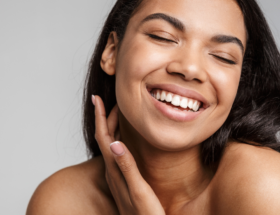A dry eye is a condition that causes tears to evaporate too quickly, leaving eyes dry, scratchy, and sometimes painful. Dry eyes may be accompanied by redness, itching, burning, and blurred vision. Occasionally dry eyes are caused by an underlying condition, such as rheumatoid arthritis or age-related macular degeneration. In other cases, dry eye may be caused by certain medications, an autoimmune eye condition called Sjogren’s syndrome or environmental factors.
What Is Dry Eye Surgery?
Dry eye, or dry eye syndrome, is a medical condition that can cause your eyes to become dry, irritated, and uncomfortable. The condition can make reading, watching TV, or even driving difficult, and it can interfere with your daily routine. Dry eye may occur because your eyes have a problem producing tears or because the tear film on your eyes is of poor quality.
It is common for people to become deficient in tears as they age since tear production naturally slows down. Dry eye symptoms include burning, itching, and redness of the eye, along with symptoms like watery eyes, sensitivity to light, and fatigue. Fortunately, there are treatments for dry eye, and one of the most common is a surgical procedure called blepharoplasty.
What Should You Know About Blepharoplasty?
Blepharoplasty is a surgical procedure designed to reduce or correct the appearance of wrinkles and sagging skin around the eye. In this procedure, excess skin and fat are removed, as well as muscle and tissue.
When you are considering blepharoplasty, it’s crucial to remember key factors for a successful outcome. First and foremost, it is crucial to consult with a board-certified surgeon who specializes in eyelid surgery. Additionally, choose a reputable and accredited surgical center that prioritizes strict safety measures. Also, during the consultation, you should discuss your goals and any concerns with your surgeon to ensure you have a clear understanding of the procedure.
When it comes to choosing the right surgeon and facility, it is necessary because this step significantly reduces the risk of complications or medical errors. If, unfortunately, medical negligence occurs during or after blepharoplasty, you might have to undergo various physical and emotional hardships. In such instances, you may even seek support from a malpractice lawyer from a law firm like Schuerger Shunnarah Trial Attorneys to manage the legal matters and take necessary actions.
Therefore, choosing a reputable surgeon and facility for blepharoplasty is invaluable in preventing such mishaps, which can take a toll on you and lead you to challenging times.
Types Of Surgery For Dry Eye
- Thermal cautery – Thermal Cautery is a type of ocular surface surgery. Thermal cautery is a minimally invasive surgical procedure that re-sculpts diseased tissue on the eye’s surface, and because it treats only diseased tissue, there is little to no scarring on the eye.
- Punctal plugs – A punctal plug is a small device inserted into the eye to help drain excess tears from the conjunctiva and reduce the risk of eye infections. The plugs may be inserted for cosmetic reasons, for vision correction (the plugs are inserted at the inside corner of the eye), or to treat certain eye conditions. There could be Temporary punctal plugs and Semi-permanent plugs.
- Temporary Punctal plugs are made from collagen or other materials which the body can dissolve and absorb in a matter of days or months. These are recommended for testing out or following surgical procedures like LASIK.
- Semi-permanent plugs are often made from silicone or acrylic. They can last for years. A doctor can remove them later on if needed.
- Punctal occlusion – Punctal occlusion is what happens when an eyelash blocks the drainage canal (called the puncta) of the tear film. Your tear film keeps the surface of your eye lubricated and healthy. If the drainage canal is blocked, your eye becomes dry.
Dry eye disease, or dry eye syndrome, affects 20% of the population in the United States. This can mean anything from minor irritation to an inability to keep the eye moist. It is more common among women and the elderly but can occur at any age. Dry eye disease is often associated with other medical conditions, including rheumatoid arthritis, diabetes, thyroid disease, and autoimmune disorders.
How To Prevent Dry Eyes
- Drink plenty of water. This will avoid dehydration and, in turn, keep eyes from drying out.
- Take a break. While working on a digital screen for an extended period of time. Look away from your screen and look at something else for at least 20 seconds. This solution is very effective and will help to protect your eyes from digital strain.
- Wear good quality sunglasses. This will protect your eyes from the sun, dry winds, and UV rays, and any other irritants which may cause dry eye syndrome.
Any eye problem, be it dry eyes or conjunctivitis, can cause you major discomfort. If your eyes are red, water constantly, or feel gritty, you may have a dry eye or conjunctivitis problem. And if you have this problem, you don’t have to live with it. These conditions can be treated at home, whether by self-care or by a visit to your eye doctor.
If you suffer from dry eyes, you know how much it impacts your life-from wearing thick lenses to feeling constantly tired to having less than pleasant vision. Dry eyes are caused by a lack of moisture in tears, and there are many ways to treat the condition. One popular solution is artificial tears, which lubricate your eyes and restore your moisture levels. But artificial tears do not solve the underlying cause of dry eyes, so you’ll need to see a doctor who may prescribe prescription medication or recommend a surgical procedure for a more permanent fix.









